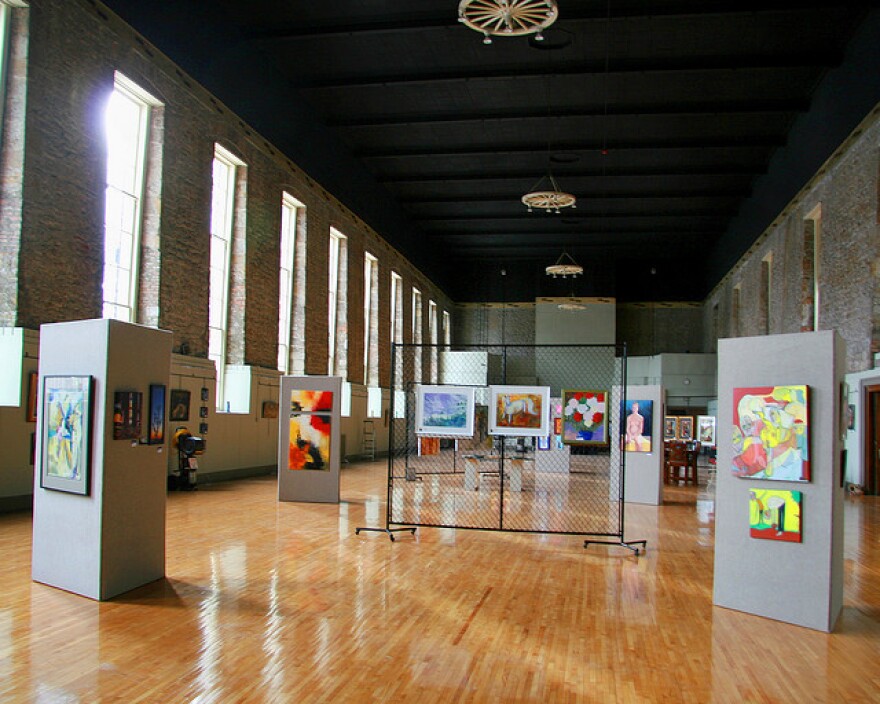For this week’s installment of “What’s Working,” Morning Edition Host Christina Shockley speaks with Judy Krasnow, resident and tour guide of the Armory Arts Village in Jackson. Located in what once served as Michigan’s first penitentiary, the Armory Arts Village is a residential community originally set up to provide living, working, and presentation space for artists.
Built in 1839, Michigan State Prison housed inmates for over a century and a half, at times also serving as an armory for the National Guard. In 2007, residents began moving into the renovated space. While the apartment space was intended to provide housing for artists, it had trouble filling all the units with practicing artists. Obviously, it is difficult enough to define what art is, let alone what makes one a practitioner of art.
Residency was soon opened to low-income families and individuals to fill the extra space, regardless of their intention to practice any type of artistic craft. Squabbles ensued amongst the residents over the original intent of the Armory Arts Village and the need to target practicing artists as potential residents. Many residents worried the goal of creating a place in the community based upon artistic expression and interaction was being cast aside due to the need to fill units.
Today, the apartment complex is at 100 percent capacity, with applicants for residency being wait-listed. Many of the residents are practicing artists who create and display their work on site, as well as travel out into the community for artistic outreach programs, including teaching and creating educational murals at local schools and museums.
As for the building itself, many reminders of its former use are apparent for those who visit and live in the Armory Arts Village. In fact, Ms. Krasnow says that much of the building’s charm is derived from its age and history. Listening to her talk about the building’s architecture, it’s obvious why she enjoys giving historical tours of the former prison during the summer.
“The building is a magnificent, 19th-century structure. And it may sound strange for me to use the word ‘magnificent’ for an old penitentiary, but in those days, architecture, beautifully done, was done even for penitentiaries. It’s a brick and mortar building. The bars are still on the windows. And it is surrounded by a 25-foot high wall. The buildings on the property and the wall were all constructed by the convicts.”
Awareness of the Armory Arts Village’s unique living space isn’t limited to residents and visitors. In addition to being ranked in the top ten most unique apartment buildings in the nation by MSN, Krasnow says her story is an example of how enticing the opportunity to live in an old prison can be.
“I actually moved here from Miami, Florida and the sunshine and palm trees to snowy Michigan because of this place. What captured me was the history. I live in a loft apartment that formerly was 36 prison cells, and I actually saw it being reconstructed from those cells. For me to live in this place, and look at my red-brick wall, and know that this is the same wall that existed when this was Michigan’s first state prison, to me, is thrilling.”
If you’re not much into living in a historical space formerly inhabited by convicts, Krasnow says there are other things to love about the Armory Arts Village. “The community is what I love, as well as the architecture,” she says, “I have made some of the closest, dearest friends here. And one of the lovely things is they are all ages.”
Beyond simply attracting residents and keeping the apartments occupied, the Armory Arts Village has loftier goals in mind. Krasnow says the residents of the apartments aim to be integrated and involved in the local community.
“Another goal of Amory Arts Village is to bring the community here and to go out into the community. So, it brings people to Michigan, and keeps people here. It’s a place where Jackson, and other Michigan artists, can come, and live, and work, and develop, and, as they say here, make art your day job.”
Eliot Johnson - Michigan Radio Newsroom






